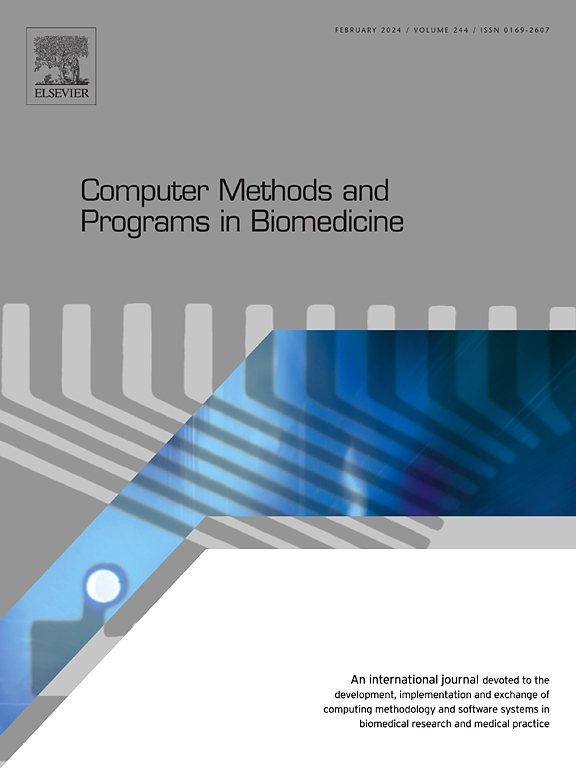Towards clinical prediction with transparency: An explainable AI approach to survival modelling in residential aged care
IF 4.9
2区 医学
Q1 COMPUTER SCIENCE, INTERDISCIPLINARY APPLICATIONS
引用次数: 0
Abstract
Background and Objective:
Scalable, flexible and highly interpretable tools for predicting mortality in residential aged care facilities for the purpose of informing and optimizing palliative care decisions, do not exist. This study is the first and most comprehensive work applying machine learning to address this need while seeking to offer a transformative approach to integrating AI into palliative care decision-making. The objective is to predict survival in elderly individuals six months post-admission to residential aged care facilities with patient-level interpretability for transparency and support for clinical decision-making for palliative care options.
Methods:
Data from 11,944 residents across 40 facilities, with a novel combination of 18 features was used to develop predictive models, comparing standard approaches like Cox Proportional Hazards, Ridge and Lasso Regression with machine learning algorithms, Gradient Boosting (GB) and Random Survival Forest. Model calibration was performed together with ROC and a suite of evaluation metrics to analyze results. Explainable AI (XAI) tools were used to demonstrate both the cohort-level and patient-level model interpretability to enable transparency in the clinical usage of the models. TRIPOD reporting guidelines were followed, with model parameters and code provided publicly.
Results:
GB was the top performer with a Dynamic AUROC of 0.746 and a Concordance Index of 0.716 for six-month survival prediction. Explainable AI tools provided insights into key features such as comorbidities, cognitive impairment, and nutritional status, revealing their impact on survival outcomes and interactions that inform clinical decision-making. The calibrated model showed near-optimal performance with adjustable clinically relevant thresholds. The integration of XAI tools proved effective in enhancing the transparency and trustworthiness of predictions, offering actionable insights that support informed and ethically responsible end-of-life (EoL) care decisions in aged care settings.
Conclusion:
This study successfully applied machine learning to create viable survival models for aged care residents, demonstrating their usability for clinical settings via a suite of interpretable tools. The findings support the introduction into clinical trials of machine learning with explainable AI tools in geriatric medicine for mortality prediction to enhance the quality of EoL care and informed discussions regarding palliative care.
求助全文
约1分钟内获得全文
求助全文
来源期刊

Computer methods and programs in biomedicine
工程技术-工程:生物医学
CiteScore
12.30
自引率
6.60%
发文量
601
审稿时长
135 days
期刊介绍:
To encourage the development of formal computing methods, and their application in biomedical research and medical practice, by illustration of fundamental principles in biomedical informatics research; to stimulate basic research into application software design; to report the state of research of biomedical information processing projects; to report new computer methodologies applied in biomedical areas; the eventual distribution of demonstrable software to avoid duplication of effort; to provide a forum for discussion and improvement of existing software; to optimize contact between national organizations and regional user groups by promoting an international exchange of information on formal methods, standards and software in biomedicine.
Computer Methods and Programs in Biomedicine covers computing methodology and software systems derived from computing science for implementation in all aspects of biomedical research and medical practice. It is designed to serve: biochemists; biologists; geneticists; immunologists; neuroscientists; pharmacologists; toxicologists; clinicians; epidemiologists; psychiatrists; psychologists; cardiologists; chemists; (radio)physicists; computer scientists; programmers and systems analysts; biomedical, clinical, electrical and other engineers; teachers of medical informatics and users of educational software.
 求助内容:
求助内容: 应助结果提醒方式:
应助结果提醒方式:


